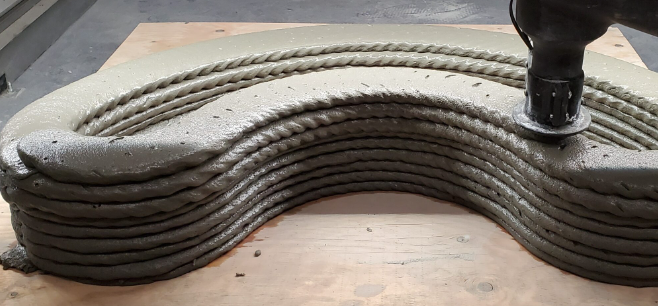Hydroxypropyl Methyl Cellulose (HPMC) is a vital additive in the construction industry, particularly in the formulation of cement mortar. Its unique properties, including water retention, workability enhancement, and improved adhesion, make it an indispensable component for high-performance mortar mixes. This article explores the application of HPMC in cement mortar, detailing its benefits and the key factors influencing its effectiveness.
Introduction to HPMC
Hydroxypropyl Methyl Cellulose (HPMC) is a non-ionic cellulose ether derived from natural cellulose. Through chemical modification, cellulose is transformed into HPMC, enhancing its solubility, water retention, and film-forming properties. These characteristics make HPMC a valuable additive in various construction materials, including cement mortar.
Benefits of HPMC in Cement Mortar
- Enhanced Water Retention
- Hydration Improvement: HPMC significantly improves the water retention capacity of cement mortar, ensuring that sufficient water remains in the mix for the hydration of cement particles. This leads to better curing and increased strength.
- Reduced Water Demand: With improved water retention, the overall water demand of the mortar is reduced, leading to a denser and more durable final product.
- Improved Workability
- Consistency and Smoothness: HPMC enhances the consistency and smoothness of the mortar mix, making it easier to apply and spread. This results in a more uniform finish and reduces the risk of segregation.
- Extended Open Time: The use of HPMC extends the open time of the mortar, allowing for more flexibility and time to work with the material, especially in larger applications.
- Increased Adhesion
- Bond Strength: HPMC improves the adhesion properties of cement mortar, ensuring a strong bond between the mortar and the substrate. This is crucial for the long-term durability and performance of the mortar.
- Crack Resistance: Enhanced adhesion helps in reducing the occurrence of cracks and ensures the integrity of the mortar layer.
- Enhanced Sag Resistance
- Vertical Applications: HPMC provides excellent sag resistance, making it ideal for vertical and overhead applications. The mortar stays in place without slipping, ensuring a consistent thickness and finish.
- Improved Freeze-Thaw Stability
- Durability: HPMC enhances the freeze-thaw stability of cement mortar, protecting it from damage due to temperature fluctuations and extending its lifespan.
Applications of HPMC in Cement Mortar
- Tile Adhesives
- Bonding Strength: HPMC is commonly used in tile adhesives to improve bonding strength and workability, ensuring tiles remain securely attached to substrates.
- Water Retention: Its water retention properties prevent premature drying, allowing for proper setting and curing.
- Plasters and Renders
- Workability: In plaster and render formulations, HPMC improves the ease of application, providing a smooth and consistent finish.
- Adhesion: It enhances the adhesion of plasters and renders to various substrates, reducing the risk of delamination.
- Self-Leveling Compounds
- Flow Properties: HPMC improves the flow and leveling properties of self-leveling compounds, ensuring a smooth and even surface.
- Setting Time: It helps in controlling the setting time, allowing for proper placement and finishing.
- Repair Mortars
- Durability: In repair mortars, HPMC enhances durability and adhesion, ensuring effective and long-lasting repairs.
- Workability: Its addition improves the workability, making it easier to apply and finish repair materials.
- Masonry Mortars
- Flexibility and Strength: HPMC contributes to the flexibility and strength of masonry mortars, ensuring robust construction joints and assemblies.
- Water Retention: It helps in maintaining moisture content, preventing shrinkage and improving the curing process.
Factors to Consider When Using HPMC in Cement Mortar
- Viscosity
- Selection: Choose the appropriate viscosity grade of HPMC based on the specific application requirements. Higher viscosity grades provide better water retention and sag resistance, while lower viscosity grades offer smoother application.
- Consistency: Ensure consistent quality and viscosity to achieve predictable performance in mortar formulations.
- Mixing Procedure
- Homogeneous Distribution: Proper mixing is essential to ensure the homogeneous distribution of HPMC in the mortar mix. This guarantees uniform performance and properties throughout the material.
- Mixing Time: Adequate mixing time is necessary to fully hydrate HPMC and activate its functional properties.
- Environmental Conditions
- Temperature and Humidity: Consider the environmental conditions during application, as they can affect the performance of HPMC in cement mortar. Higher temperatures and low humidity may require adjustments in the formulation to maintain optimal workability and curing.
Conclusion
Hydroxypropyl Methyl Cellulose (HPMC) plays a crucial role in enhancing the performance of cement mortar. Its benefits, including improved water retention, workability, adhesion, and sag resistance, make it an essential additive for high-quality mortar formulations. By understanding the specific requirements of each application and selecting the appropriate HPMC grade, manufacturers and builders can achieve superior results, ensuring durable and reliable construction outcomes.


